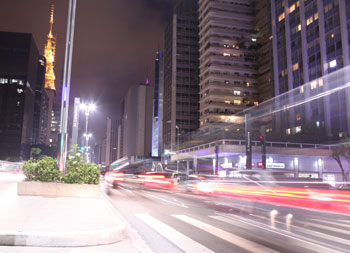Brazil’s Economy 2012: Overview of Brazilian Economy
The growth of the Brazilian economy over the past two decades is astonishing. From one of the third-worlds, inflation-ridden, underdeveloped economies, Brazil has now risen to the ranks of the world’s top six economies.
Not only is this an astonishing rise, it is also an astonishingly rapid rise: Brazil first made it into the Top Ten in 2005 with GDP of US$0.9 trillion, and in less than six years moved from 10th to 6th, surpassing such giants as Britain, France, India, Russia, China, Spain, and Italy along the way.
The growth of the Brazilian economy over the past two decades is astonishing. From one of the third-worlds, inflation-ridden, underdeveloped economies that characterized Latin America in mid-century, Brazil has now risen to the ranks of the world’s top six economies—along with the US, China, Japan, Germany, and France.
Not only is this an astonishing rise, it is also an astonishingly rapid rise: Brazil first made it into the Top Ten in 2005 with GDP of US$0.9 trillion, and in less than six years moved from 10th to 6th, surpassing such giants as Britain, India, Russia, Spain, and Italy along the way. By 2011, Brazil’s GDP rose to US$2.6 trillion. Nor is the end in sight—the International Monetary Fund predicts that Brazil will surpass France to become the world’s fifth-largest economy by 2015.
To achieve such a dramatic growth in a short time brings with it dramatic numbers on many fronts. For example, foreign trade has grown by a factor of four, reaching half a trillion dollars in 2011, while China has become Brazil’s main economic partner, ahead of the United States. According to bank data, foreign direct investment in Brazil rose to $67 billion in 2011, up from $49 billion in 2010 and less than $20 billion five years ago.
Over this period, more than 40 million more Brazilians have moved up to middle class, which now accounts for more than fifty percent of Brazil’s 195 million people.
Brazil’s Turn to Economic Orthodoxy
Brazil’s dramatic growth curve can be traced back the mid 1990s when the government began adopting orthodox economic policies under the direction of its finance minister, Fernando Henrique Cardoso. Cardoso rolled out the Plano Real (Royal or Real Plan) which, once implemented, achieved stability for the Brazilian economy. As a result, Cardoso was elected president in 1994 and reelected in 1998, which allowed him to firmly implant successful economic principles for guiding the country and insuring its growth.
Cardoso’s foundation of orthodox economics was continued by his successors, Luís Inácio Lula da Silva, who was elected in 2002 and re-elected in 2006, and by the current president, Dilma Rousseff, elected in 2011. Since the mid-1990s, therefore, Brazil has had both political stability and continuity of growth-inducing policies.
The election of Lula de Silva in 2002 was the decisive moment in Brazil’s economic trajectory. Prior to his election, Lula de Silva was an opponent of many Cardoso’s economic reforms, and after his election, he often praised the merits of socialism when visiting foreign countries, such as Hugo Chavez’s Venezuela or Fidel Castro’s Cuba.
Nevertheless, back home he rigorously followed and deepened the orthodox reforms of his predecessor, guaranteeing that the path laid out to economic growth would continue.
Lula de Silva is the first to recognize the irony of his achievement. While immensely proud of his accomplishments—the biggest of which is, as he says, “We are no longer debtors, but have become international creditors”—he admits with a twinkle in his eye:
“There is no little irony in the fact that that the union leader who once shouted ‘IMF out!” in the streets has become the president who paid off Brazil’s debts to the same institution—and ended up lending it $14bn.”
Perhaps it is due to this appreciation of irony that it was during the eight years of his presidency that not only did the orthodox principles of his predecessor come to fruition, but the confidence and optimism of Brazilians reached new heights.
Joining the BRICS
Politically, this huge growth has also catapulted Brazil into the ranks of the world’s most influential players after the United States—the world’s sole hyperpower. Now part of the first tier of powers after the G-7, Brazil has become one of the club known as the BRICS—the acronym for Brazil, Russia, India, China, and South Africa—the second set of main actors on the global stage.
Brazil’s inclusion along with such international giants as China, Russia, and India has projected the nation into a position of international influence that otherwise would have taken years, perhaps decades, to achieve. Brazil now finds itself a major voice in international agencies and forums on a large array of global issues ranging from climate change and human rights, to war and peace. As a result, Brazil now finds itself carrying more weight in not only more widely in South America, but having an effect in Africa and the Middle East.
Challenges
As with any period of rapid growth, Brazil faces a multitude of challenges. The profitable development of the country’s mining and extractive industries poses significant conservation, environmental, and resource management issues to be resolved. The rapid growth of the economy has put pressure on its economic institutions to maintain the value of its currency. The vast infusion of foreign investment raises concerns about the preservation of local control. And the increasing wealth of its population places severe strains on the country’s infrastructure to meet higher demands for almost every public service, from more roads to carry the automobiles its people are now buying, to more demands for electricity, water, and sewage.
But these are the challenges arising from success not from poverty. Brazilians now face the future hoping for more such success—and look forward positively to facing many more such challenges.